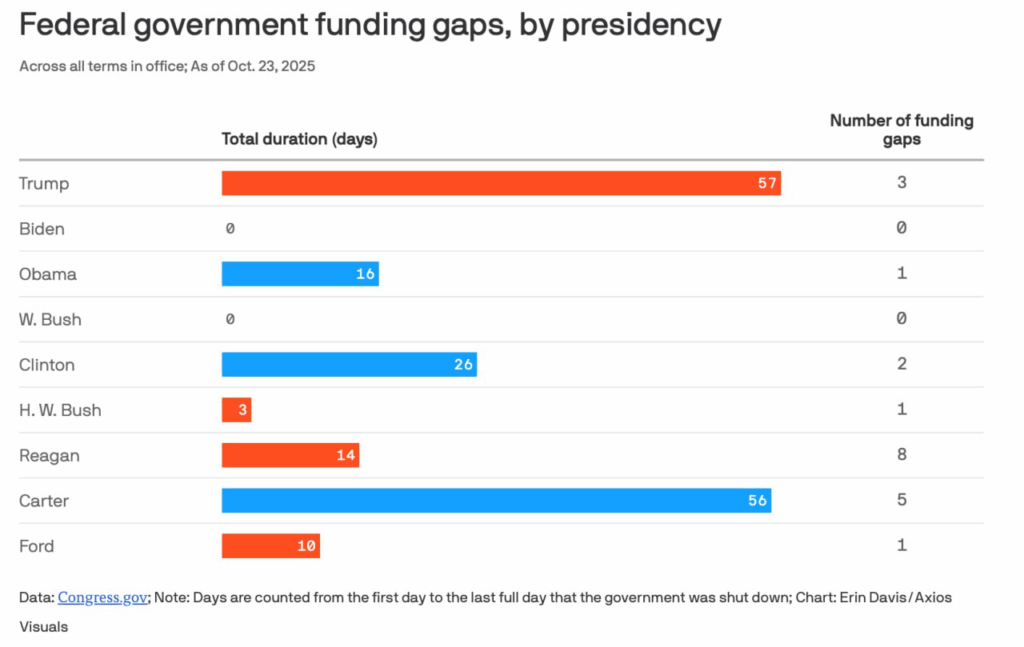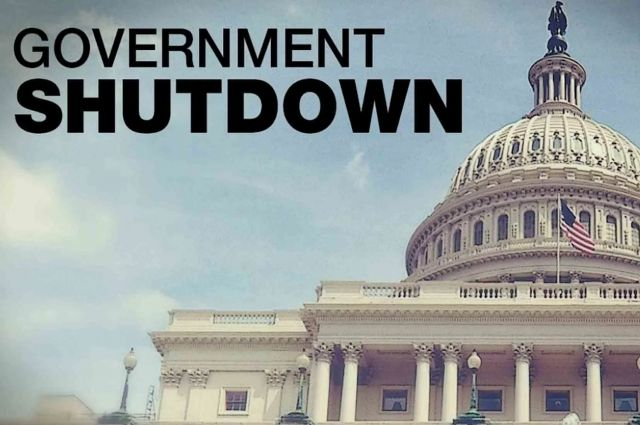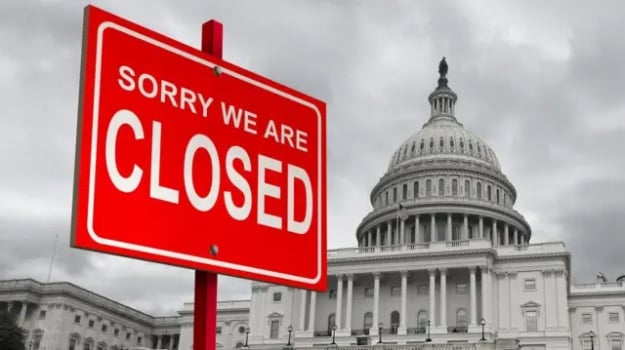⏳ The U.S. federal government under Donald Trump has set a new historic record: in total, over his two presidential terms, government institutions have been shut down for 57 days. This means Trump has surpassed the previous record holder — Jimmy Carter — whose shutdowns lasted a combined 56 days.

What Is a Shutdown and Why It Matters
A shutdown is the suspension of the U.S. federal government’s operations due to the lack of an approved budget. When Congress and the President fail to reach an agreement on funding, the government effectively “turns off”: most federal agencies halt operations, hundreds of thousands of employees are placed on unpaid leave, and public services — from museums and research programs to visa processing — are frozen.
A shutdown doesn’t mean a complete paralysis of the country. Essential services — such as police, healthcare, air traffic safety, the military, and emergency response — continue to function. Everything else deemed “non-essential” is put on hold. The procedure is established by U.S. law and serves as a pressure mechanism — a tool in the political struggle over the budget.
That’s why every shutdown is not just a financial crisis but also a sign of political confrontation between the White House and Congress.

How Trump Broke the Record
The first major shutdown under Trump occurred at the end of 2018 and lasted 35 days — the longest in U.S. history. The cause was a conflict with Congress over funding for the U.S.-Mexico border wall. Trump refused to sign the budget without this provision, while the Democratic majority in the House of Representatives refused to give in.
That episode became the longest shutdown on record. However, in subsequent years, repeated budget delays led to new shutdowns. By 2025, their total duration reached 57 days — officially recognized as a new record.
The current shutdown stands out for its scale: it represents a complete closure of the federal government, with no partial funding or temporary extensions. Millions of federal contracts have been frozen, thousands of employees are working without pay, and agencies have switched to minimal activity.

Political Consequences
For Trump, this record has a double meaning. On one hand, his supporters portray it as a show of strength and determination to “stand firm” in the fight for budgetary and political goals. On the other hand, critics accuse him of administrative irresponsibility, arguing that such crises undermine trust in institutions and cause economic damage.
Analysts estimate that each day of a shutdown costs the U.S. economy hundreds of millions of dollars. During the 35-day crisis of 2018–2019, the U.S. GDP lost around $11 billion, of which $3 billion was never recovered even after the government resumed work.

Shutdown as a Mirror of American Democracy
While shutdowns seem like a uniquely American phenomenon, they stem from the principle of separation of powers. Neither the President nor Congress can unilaterally approve the budget, and when compromise fails, funding automatically stops. This turns the budget process into a high-stakes political standoff.
Historically, shutdowns have occurred under various presidents — from Carter and Reagan to Clinton and Obama. But under Trump, they have become more frequent and intense, reflecting deep polarization in American society and the erosion of dialogue between branches of power.
🕰️ Today’s record is not just a number. It is a symptom of a systemic political governance crisis in the United States, where the struggle for power increasingly paralyzes the functioning of the state.
All content provided on this website (https://wildinwest.com/) -including attachments, links, or referenced materials — is for informative and entertainment purposes only and should not be considered as financial advice. Third-party materials remain the property of their respective owners.


